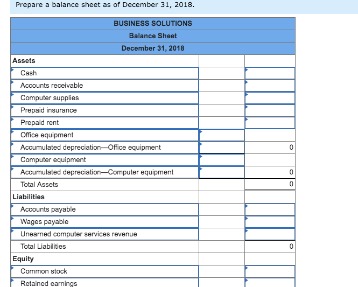How To Form a Single-Member LLC
Content
In this example, the operating agreement would outline the profit sharing and distributions in alignment with the percentages of monetary investment versus sweat equity. Profit-sharing might look like 25% for member A and 75% for member B. The benefit of electing the S corp tax classification is being able to avoid paying FICA self-employment taxes on your distribution(s). I recommend that LLC members talk with an accountant or tax professional. It’s helpful to gain insight from someone who understands all the ins and outs of self-employment tax and all of the other taxes (federal, state, and local) that LLCs must pay.

You should also reach an agreement with all members on how the company’s profits will be divided — whether evenly or based on ownership percentage, or otherwise. If you don’t provide for these issues in your operating agreement, the default provisions of the LLC statute under which your LLC was formed will govern these matters. The IRS also has strict guidelines about how LLC members are paid and how those earnings are reported or classified on your tax return (known as a tax election). By default, an LLC is taxed as a sole proprietorship (if it has one member) or a partnership (if it has more than one member).
Limited Liability Companies
A single-member LLC is a limited liability company with only one owner. This type of LLC is taxed as a sole proprietorship, with the owner paying taxes on their entire share of the profits. Your single-member LLC is a “disregarded entity.” In this case, that means your company’s profits and your own income are one and the same. At the end of the year, you report them with Schedule C of your personal tax return (IRS Form 1040).
Are you paying health insurance premiums for yourself or your family while operating your S Corp? With the right plan in place—and help from professionals when you need it—you can manage your S Corp payroll without running into any of these hazards. Let’s take a closer look at five missteps you’ll definitely want to avoid. All LLCs with employees or any LLC with more than one member must have an EIN. LLC members are paid differently, depending on the LLC’s tax structure.
Sole proprietorship
Your portion of the FICA taxes will automatically be taken out of your salary by your bookkeeper or payroll service. Most small business owners choose to pay themselves a distribution that passes through to their individual tax returns. LLC owners pay self-employment taxes by making estimated tax payments quarterly throughout the year (in April, June, September, and January).
- Because you’re not taking a salary, you can’t pay your taxes through withholding from your payroll.
- This tax structure is called a “disregarded entity.” The SMLLC is a unique hybrid in the world of business types.
- Instead, you are paid directly through what is known as an “owner’s draw” from the profits that your company earns.
- With either of these methods, you can deduct salaries paid to employees.
- A common misconception about S-Corporations is that they are a type of business entity, like a corporation (also known as a C-corporation or C-Corp).
One important area to understand as an LLC owner is the taxes you’ll owe. Generally, you will pay taxes on your profits, whether you use them to pay yourself, keep them in the business or do something else with them. A change in the reporting position will be treated for federal tax purposes as a conversion of the entity. If your LLC is taxed as a partnership, normal tax rules apply to the business. This means that all taxes flow through to the members, and the LLC’s income is taxed on each member’s tax return.
What Are The Different Types of LLCs?
Like corporations, all types of LLCs provide limited protection against personal liability. In general, business profits and losses are reported on your personal income tax return rather than a business tax return, and no annual meetings are required. An LLC, or limited liability company, is a type of business entity that combines the tax benefits of a sole proprietorship with the personal liability protection of a corporation. LLCs are a common business structure for small business owners and entrepreneurs because they offer tax benefits and liability protection without the formalities of a big corporation. That’s because LLCs are treated as disregarded entities for tax purposes.
- While a C corp LLC can be disadvantageous for those drawing regular income, it can be a useful structure for higher net-worth members planning to leave capital in the business.
- But when the IRS says you should pay yourself a “reasonable” salary, what do they mean by “reasonable”?
- Apply for financing, track your business cashflow, and more with a single lendio account.
- Note that a Single-Member LLC is different from a Sole Proprietorship.
- If you’re taxed as a sole proprietor (single-member LLC) or a partnership (multi-member LLC), then you don’t normally need to pay yourself through a payroll system.
You still need to pay income tax on the profit earned, since the profits from your LLC pass through to your personal bank account. If you expect your percentage of the year-end LLC profits to be $12,000, you could set up a draw to receive $1,000 each month as personal assets from the business bank account. The total of all the draws throughout the year is deducted from the total year-end profit. So if your draw for the Single Member Llc Payroll year totaled $12,000, but your share of the profit ends up being $15,000, then you would receive $3,000 at the end of the year. If you’re the sole member of the LLC, then it’s considered a single-member company and will be taxed as if it’s a sole proprietorship (unless you elect to be treated as a corporation). These numbers are reported on the same return as any other income sources you have outside of your business.
Because corporate LLC owners who work at the company receive a standard salary, all required taxes are withheld before paychecks are issued. Rather than taking a conventional salary, single-member LLC owners pay themselves through what’s known as an owner’s draw. The amount and frequency of these draws is up to you, https://kelleysbookkeeping.com/ but it’s ideal to leave enough funds in the business account to operate and grow the LLC. As an owner of a limited liability company, known as an LLC, you’ll generally pay yourself through an owner’s draw. This method of payment essentially transfers a portion of the business’s cash reserves to you for personal use.
- Instead, you will report your share of the business income on your personal tax return and pay income taxes and self-employment taxes on it.
- This can save you about 15% on your taxes compared to if you were to just take distributions.
- You can earn additional personal income as profit distributions from the business.
- It’s more of a starting point, and you’ll need to assess your particular situation and refine it for you and your business goals.
Keep in mind that owners of LLCs taxed as C Corporations will also use payroll systems to pay themselves, but tax management and implications for C Corps are involved and complex. Members of C corp LLCs get half of their FICA taxes paid by the LLC but must cope with the double taxation issue. Alternatively, S corp LLCs avoid double taxation while also paying their half of the employee member’s self-employment tax.
Start your 3-day free trial today!
They can each draw as much or as little of their shares as they choose, as long as sufficient funds remain on hand for day-to-day business expenses and growth. Unlike with payroll in a C corp, an owner’s draw is also not considered a deductible business expense for an LLC by the IRS, meaning it cannot be claimed against corporate tax. They can also receive non-salary payments or “guaranteed payments” — basically a payment that is made regardless of whether the LLC has generated any net income that month or quarter. This ensures cash flow for each LLC member during unprofitable periods.
- You can choose your pay as a business owner, but your tax treatment might regulate how much it should be.
- US non-residents who own an LLC don’t have to pay self-employment taxes.
- To learn how to withhold these, check out our guide on how to calculate and pay estimated tax.
- You may also deduct your own salary from the company’s earnings if you choose to be taxed as a corporation or LLC.

Leave a Reply
Want to join the discussion?Feel free to contribute!